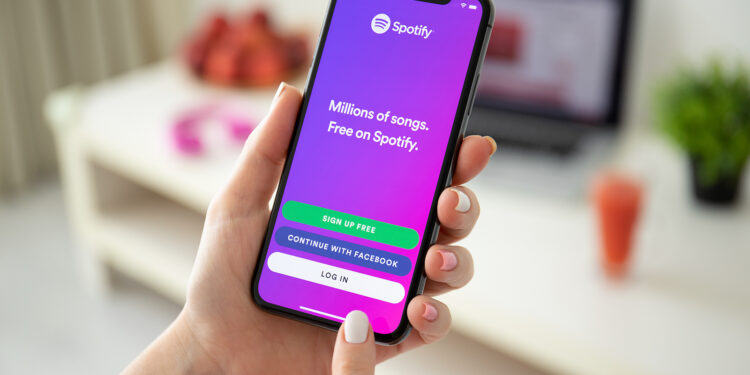Spotify recently made headlines with an impressive figure: $10 billion was distributed to the music industry in 2024. The streaming giant not only set a record but also sent an important message. But this news comes at an exciting time. Just a few days earlier, Spotify had denied reports that Apple Music was paying artists more money per stream.
The music industry has undergone enormous development in recent years. Around ten years ago, in 2014, it was at its lowest point. Global revenues from recorded music had shrunk to just 13 billion US dollars. At that time, services like Spotify were only just helping to get the market moving again. Today, however, streaming is the dominant source of income for musicians and labels. But the question remains: how fair are the payments and how do the providers position themselves?
Spotify denies reports of higher payments from Apple Music
A few days ago, Spotify reports who claimed that Apple Music pays artists more than twice as much as Spotify per stream. According to Spotify, such comparisons are misleading because they ignore the complexity of revenue distribution. Factors such as the total number of streams, where users come from or advertising revenue play a large role in determining how much money artists actually receive. Spotify is using this moment to highlight its own role. The focus is on the total amount paid out to the music industry and less on the individual stream. According to Spotify, it is about stability and a sustainable business model that benefits everyone involved in the long term.
Record payouts: $10 billion in 2024
In a blog post Spotify announced that it would have paid out a record $10 billion to the music industry by 2024. This figure is impressive considering that Spotify only contributed $1 billion per year in 2014. In total, Spotify has paid out almost $60 billion to the industry since its founding. The company emphasizes that these sums were made possible by the growth of the platform. In 2014, Spotify had just 15 million paying subscribers. Today, however, the streaming service reaches hundreds of millions of users worldwide and has established itself in numerous countries.
How Spotify generates revenue and strengthens the music business
David Kaefer, VP of Spotify Music Business, explains in the blog post how Spotify has become a stable source of income for the music industry. The company is pursuing three key approaches:
- Stabilizing the service: Spotify continuously invests in new features and an improved user experience. The goal is to keep listeners loyal to the platform in the long term and to give them new reasons to actively use the service.
- Converting advertising listeners into subscribers: A large part of the revenue comes from premium subscriptions. Spotify tries to convert users who use the free, ad-supported service into paying subscribers. It is increasingly successful in doing this through special offers and local price adjustments.
- Opening up new markets: Spotify has invested heavily in expanding into new markets in recent years. With locally adjusted prices and an offering tailored to people's needs, the company has been able to build a global user base.
More artists can make a living from Spotify
In addition to the record sums for the music industry, Spotify has also made progress in supporting individual artists. According to Spotify, in 2014, around 10,000 artists earned at least $10,000 per year through the platform. Today, that number has multiplied: over 10,000 artists now earn more than $100,000 per year through Spotify alone. This development shows that streaming can be a reliable source of income not only for the major labels but also for many artists. However, the desire for more transparency and a fair distribution of revenue remains, especially for smaller musicians.
Spotify: A key player in the resurgence of the music industry
Spotify has become a key player in the music industry in recent years. The record payout of 10 billion US dollars in 2024 underlines the importance of the streaming service for musicians and labels. But despite the positive developments, questions remain about the fair payment of individual artists. The figures show that Spotify is a driving force behind the resurgence of the music industry. As a user, you are helping to drive this development forward - be it by listening to music, sharing playlists or a premium subscription. Whether Spotify or Apple Music: It is important that streaming services continue to create great products that make music accessible to everyone and at the same time lucrative for artists. (Photo by DenPhoto / Bigstockphoto)
- iOS 18.3 Update: Over 20 vulnerabilities fixed
- DeepSeek in focus: Efficient AI from China with global consequences





